#Jo Yi Hyu
Text
Avez-vous vu ce drama ? Si oui, qu'en avez-vous pensé ? Et sinon, voulez-vous le voir ?
N'hésitez pas à venir laisser vos commentaires sur mon blog !

View On WordPress
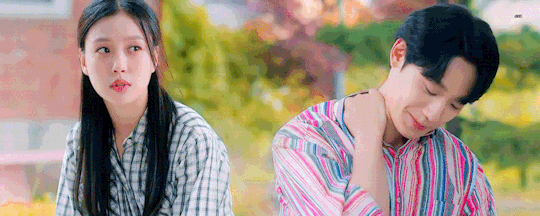

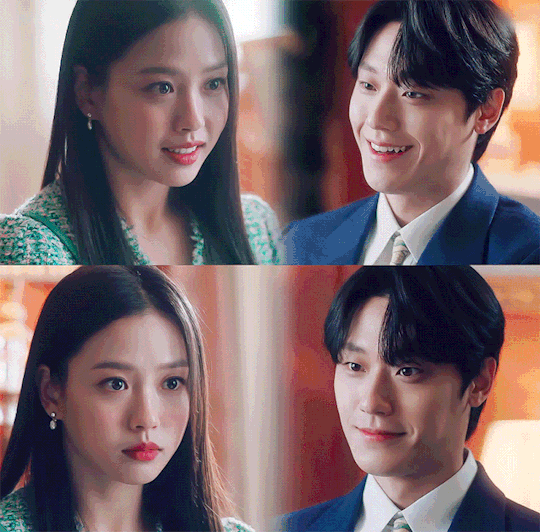




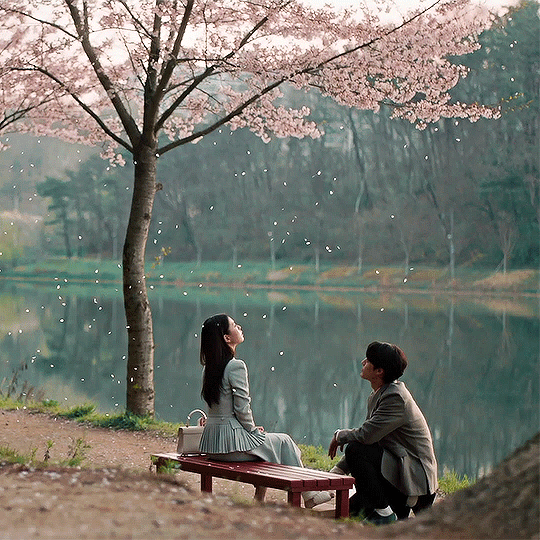



#2023-2024#2024#4 Étoiles#4 Stars#Amitié#Amour#Choi Seung Hoon#drama coréen#Dramas#drame#Famille#Geun Sae Rok#Go Min Si#Histoire#Jo Yi Hyu#kdrama#Kim Won Hae#Lee Do Hyun#Lee Sang Yi#Mai#Mai 2024#mélodrame#Oh Man Suk#Passé#Romance#Tragédie#Uhm Hyo Sub#avis drama#mon avis#avis
1 note
·
View note
Text
Jirisan (2021)
Kdrama | 16 episodes | 1hr
Set in Jirisan, a tale of mystery, thriller and a bit of romance thrown in for good measure. Overall, this one is just amazing to watch.
The story unfolds over the picturesque Jirisan involving the park rangers (I’ve not seen them portrayed in kdramas but maybe I have yet to watch those dramas). I watched this because of Ju Ji Hoon, Jun Ji Hyu, Sung Dong Il, Oh Jung Se and Jo Han Chul. Brilliant acting overall. Oh yea Kim Young Ok’s in this one as well.
Ju Ji Hoon’s character Hyun Jo has been having visions of deaths on Jirisan ever since the incident involving one of his army guys. He couldn’t get over them and eventually decided to train as a ranger in Jirisan. There he met a very headstrong ranger, Yi Gang, who has lived all her life in Jirisan ever since her parents died in the flood. The story goes back and forth from the past to the present as the incidents keep piling up in Jirisan eventually a pattern emerges and they continue to investigate.
Unfortunately, both Yi Gang and Hyun Jo got into an accident because of the killer that they were chasing and this derailed their investigation.

You might think this guy is the killer but he’s not.

They encountered challenges along the way, lost their loved ones in the process of finding the killer and also get hurt themselves to the point of almost dying!
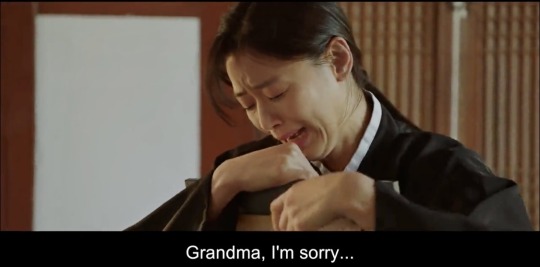
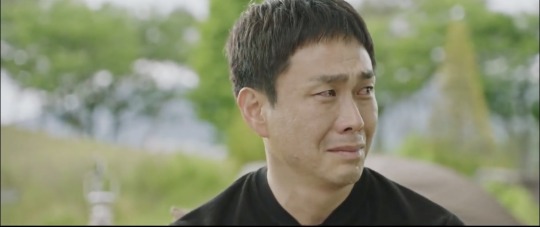
I cannot do justice in a summary. Really have to watch it. Every episode makes me feel like I am actually on the mountain without being there. I think this one’s for those who dream of being in the mountains but are facing obstacles.


Overall, just go watch this. Enjoyed how the story played out and how the past becomes connected to the future. This is good storytelling.
#kdrama#jirisan#mountain#ju ji hoon#jun ji hyun#sung dong il#oh jung se#jo han chul#vincenzo#kim young ok
4 notes
·
View notes
Text
5.5. Factional disputes
Question 5: Conditions in the middle part of the Joseon era ›5. Factional disputes
Click here for table of contents
5.5. Factional disputes
We continue to quote the essential points from Confucianism of Korea.
[After the Sarim faction split into the Easterners and the Westerners in 1575 (8th year of Seonjong), each faction continued to divide into even smaller groups by attaching to small differences rather than uniting for a common purpose regardless of minor differences. At first, they just debated with each other, but their disputes worsened and they went so far as to kill each other.
The factional dispute became the most intense after King Hyojong’s death in 1659, when Song Si-yeol and Yun Hyu argued over the mourning period of Gwi-in of the Jo clan, royal consort of his father King Injo. […] This was in fact close to a vicious cycle of retaliations and mutual attacks based on complete mutual negation. […]
- 1660 (first year of King Hyeonjong):
First ritual controversy. The Westerners defeated the Southerners.
- 1674 (15th year of King Hyeonjong):
Second ritual controversy. The Southerners won over the Westerners.
- 1680 (6th year of King Sukjong):
The Westerners grabbed power. Reprisals against the Southerners took place.
- 1683 (9th year of King Sukjong):
The Southerners seized power. They split into the Noron and Soron factions.
- 1689 (15th year of King Sukjong):
The Southerners took control of power. They led retaliation against the Noron faction. Song Si-yeol was forced to kill himself. Purges and attacks against the Noron faction continued.
- 1694 (20th year of King Sukjong):
The Noron faction seized power and started retaliation against the Southerners. The Southerners were banished and exiled. They suffered so much damage that they could no longer recover themselves as a ruling faction.
- 1721- 1722 (First and second years of King Gyeongjong):
The Soron faction won power and led reprisals against the Noron faction. Over 60 people, including the four ministers of the Noron faction, were executed or died in prison. ]
In the description above, such designations as Southerners, Westerners, Soron and Noron have no meanings. These terms are used just to distinguish different factions. History of Korea by the Society for the Korean Historical Science describes how Korean rulers continued to engage in political conflict for their own interest.
[ - 1727:
Members of the Soron faction were saved from the attacks by the Noron faction. The leaders of the Noron faction fell from power.
- 1728:
There was a rebellion in Cheongju and Cheongju Castle fell. It was led by the Southerners who wished to eliminate King Yeongjo and the Noron faction. The revolt was suppressed, and many people involved were executed.
- 1755:
An evil message marked with the word “disloyal retainer” was hanged on the guest house in Naju. The survivors of the Musin Revolt were arrested and the radicals of the Soron faction were executed. Their descendants were also punished.]
The main points at issue in the controversies between Noron, Soron and Southerners that continued for 95 years were not about national politics or civil welfare, but rather about the rituals on the mourning period of Jo Gwi-in, King Injo’s royal consort. This was a dispute lacking in political perspective. Kang Jae-eon went so far as to affirm that “the calumny, defamation, plots and massacres between the factions, as well as the political confusion and factional disputes, constitute a shameful history that one would have hoped to remove from the history of the Confucianism of Korea.” However, he did not neglect the fact but described the truth, referring to the most important thing: why such disputes took place.
[In his Theory on factions, Yi Ik very clearly pointed out the essence of the factions, stating that all factions were united through profit. Factions were born from conflicts, and conflicts arose from interests. It was quite natural to say that the more urgent the interest was, the more deeply rooted the faction would become, and the more permanent the interest was, the more firmly the faction members would be united. Why did factions exist? It was because there were too many people who had been selected through frequent Imperial Examinations (Gwageo) and they did not know how they could get ahead due to favoritism.
Factional disputes did not consist of confrontations between the “Princes” and the “Worthless men”. In fact, factions tried to denounce their opponents as the “faction of worthless men” and to oust them from the prince’s side, thus ensuring monopoly of power. It was a struggle for power based on narrow partisanship and aimed at attacking and eliminating different political groups.]
It was an era that many people would want to delete from the history of Korea, when people in power were engaged in factional disputes for 65 years and then for another 30 years, without taking account of the livelihood and happiness of people, payed too much attention to unimportant details that had nothing to do with the essence of politics, continued to retaliate against others for their own interest, and tried to exterminate opposing factions and thus to monopolize profits.
There is the following description in High School Textbook entitled “Factions were formed”.
[[…] During the process in which the conflict between the two forces got increasingly fierce, the split into the Easterners and the Westerners occurred over the post of cheollang in the Ministry of Personnel (Ijo). The Easterners were mainly composed of the newly risen literati while the Westerners comprised existing officials called Sarims. The Sarim officials, who took over academic knowledge, formed the Easterners while the intellectuals constituted the mainstream of the Westerners. After that, factions were formed based on academic schools, regions and political philosophies, and they had both academic and political characters at the same time.]
This description has a lot of ambiguous aspects. First, the distinction between the newly risen literati, who formed the Easterners, and the existing Sarim officials, who constituted the Westerners, is unclear. The newly risen literati were Sarim officials, and the existing Sarim officials were newly risen literati. In other words, both factions comprised the same people.
Second, the distinction between the Easterners, composed of the “Sarim officials who took over academic knowledge”, and the Westerners, based on “intellectuals”, is also ambiguous. The inheritance of academic knowledge was a sign of the intellectuals, and the intellectuals took over academic knowledge. It is impossible to distinguish them.
Third, the factional disputes were not caused by factions that had been united through political philosophy. It is impossible to consider that they had academic or political character.
It would be adequate to consider that “each faction just tried to ensure monopoly of power through power struggle based on narrow partisanship and aimed at attacking and eliminating different political groups”, as suggested by Kang. It is likely that High School Textbook uses nonsensical expressions and descriptions contrary to the reality by referring to political mobilization that actually did not happen, in order to hide the fact that the power struggles “based on narrow partisanship and aimed at attacking and eliminating different political groups” continued for 65 years.
Besides, there is a following description in “Chapter 2: History, Introduction”, The History of the Church of Korea, written by a French author.
[Generally speaking, what is called political vitality, progress or revolution does not exist in Korea. People are neglected, and their opinions are never tolerated. The nobility class, which has full control of power, only pays attention to people when it tries to oppress them and squeeze as much wealth as possible. The nobility is divided into several factions and they relentlessly vent their hatred on each other. However, these factions do not have opposing political or administrative perspectives, and they are just arguing with each other over their dignity or professional influence. For the last three centuries, Korean history has been monotonously marked with futile and bloody quarrels among aristocrats.]
It was in 1874, in the nineteenth century, that the Frenchman Charles Dallet wrote “Introduction” of The History of the Church of Korea, so the “last three centuries” refers to the period between 17th and 19th centuries. In addition, in the same work, he described how the factions were formed, how they disgraced and showed their hatred toward each other and told their descendants to take revenge as in the following text:
[The aristocrats who lost their official posts or even their lives due to the conspiracy by their enemies entrust vengeance to their descendants. They often receive a tangible keepsake to achieve reprisal. For example, the victim gives a piece of his clothing to his son and leaves a testament ordering him not to take it off until he avenges his father. […] This testament remains valid until the aspiration is achieved, so they continue to wear the ragged clothes for two or three generations. […]
In Korea, if one does not take revenge for one’s father’s death, the paternal relationship will be denied, and a person will even lose the right to use his own surname. Such disloyalty by descendants will violate the very essence of the religion of this country based solely on the worship of ancestors.]
It is often said that the spirit of Han (resentment, hatred or regret) is rooted in today’s Korean people. This idea basically comes from the Confucian doctrine that puts emphasis on the worship of ancestors and seems to have been deeply engraved in people’s spirit through the disputes among the informal factions of the Joseon era. However, we believe that Han could cause division among people in Korean society, because it encourages people to swear vengeance. Even trivial matters can provoke an interminable cycle of vengeance, making people unhappy forever.
In Korea, there seems to have been an unwritten rule that committing an act of revenge was not punishable.
However, the chain of vengeance that had made the Korean people eternally unhappy seems to have been superficially broken by the Japanese rule, fortunately or unfortunately. This is because, under the Japanese rule, acts such as killing, injuring, damaging, deceiving, humiliating or tormenting others, even if done for revenge, were not allowed and were considered crimes, and also because the Japanese rule made false accusations and slanders meaningless and useless.
However, if we look at how the successive South Korean presidents in the post-Japanese era have been treated after they left office, it appears that the cruel revenge play against political enemies has been unfolding again.
We make this statement because former South Korean presidents have fled the country, been convicted, assassinated, imprisoned for life, sentenced to long prison terms, forced to commit suicide, sentenced to 17 years in prison, and most recently President Park Geun-hye was sentenced to 42 years in prison at the first trial, handcuffed, and had already been in jail for three years before the Supreme Court confirmed her sentence.
We believe that South Korea has achieved current prosperity because all the former presidents have performed and often succeeded in their duties with all their might for the benefit of their own country and its people. Seeing how successive presidents, who deserve to be praised, were plunged into the depths of misery by being incriminated, as described above, we cannot help wondering if this is the reincarnation of the revenge dramas between the factions seen during the Joseon era, when the political actors were ruthless and cruel in their attacks on their opponents.
Do the people of Korea feel nothing for the miserable fate to which they have put their elected presidents? Is this fair justice in Korea?
0 notes
Link
Drama Korea Black Dog Subtitle Indonesia
SINOPSIS Drama Black Dog :
“Black Dog” akan menceritakan kisah remaja dan hal-hal yang terjadi di sekolah. Go Ha Neul yang diperankan oleh Seo Hyun Jin adalah seorang guru sekolah yang tidak berpengalaman dan Dia mendapat tugas untuk mengajar di sekolah menengah swasta di lingkungan Daechi, sebuah daerah mahal yang dikenal untuk standar pendidikan obsesifnya. Disana Ia dikontrak sebagai guru honorer.
Park Sung Soon diperankan oleh Ra Mi Ran merupakan seorang guru tetap dan juga berada di sekolah swasta yang sama bersama Go Ha Neul. Dia menjabat sebagai kepala departemen bimbingan karir.
Detail K-Drama Black Dog:
Judul : Black Dog
Judul Lainnya : Beullaegdog / 블랙독
Genre : Drama, School
Episodes : 16 (to be confirm)
Sutradara : Hwang Joon-Hyeok
Penulis Naskah : Park Joo-Yun
Stasiun Channel : tvN
Jadwal Tayang : 16 Desember 2019, setiap hari Senin dan Selasa pukul 21.30 KST
Daftar Pemain Black Dog :
Main Cast
Seo Hyun Jin as Go Ha Neul
Ra Mi Ran as Park Sung Soon
Ha Joon as Do Yeon Woo
People around Go Ha Neul
Tae In Ho as Kim Young Ha
Lee Hang Na as Song Young Suk
Kim Jung Young as Moon Soo Nyeo
Maeng Sang Hun as Go Seung Chul
Teacher
Lee Chang Hoon as Bae Myung Soo
Jung Hae Kyun as Moon Soo Ho
Park Ji Hwan as Song Young Tae
Yoo Min Kyu as Ji Hae Won
Jo Sun Joo as Kim Yi Boon
Heo Tae Hee as Ha Soo Hyun
Ye Soo Jung as Yoon Yeo Hwa
Kwon So Hyun as Song Ji Sun
Others
Kim Hong Fa as Byun Sung Joo
Lee Yoon Hee as Lee Seung Taek
Kim Seung Hoon
Im Hyu Sung
Download Drama Korea Black Dog Sub Indo
Episode 1
360p : Mega | Letsupload | Racaty | Uploadcenter | Files| Solidfiles| Zippyshare | GDrive | Mirror
540p : Mega | Zippyshare | Letsupload | Uptobox | Racaty | Uploadcenter | Files | Solidfiles | GDrive | Mirror
Sub Indo | Eng Sub
The post Drama Korea Black Dog Subtitle Indonesia appeared first on kshowsubindo.org.
0 notes